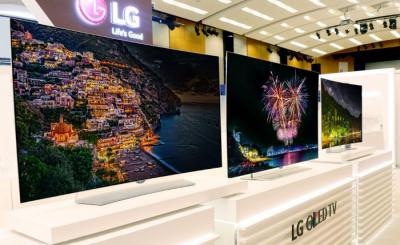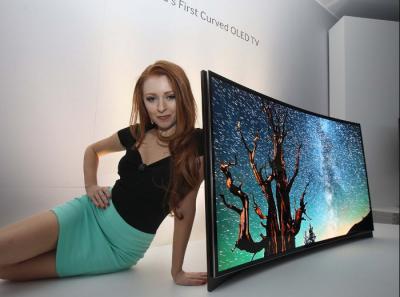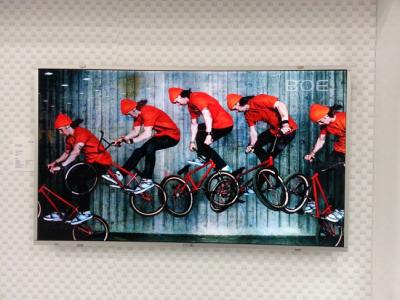LG Display have officially asked Samsung Display to start making OLED TV panels again and help Korea beat Chinese companies to the OLED market. LGD's CEO says that Samsung will indeed join with LG, and this more a matter of timing.

LGD further updates that the work towards its $8.7 billion P10 OLED fab in Paju has begun - or at least some of the land work is underway. This will be the world's largest OLED fab, and will produce both large OLED TV panels and small panels for mobile devices.
In 2015, LG Display sold 400,000 OLED panels, half of them in Q4. In 2016 the company aims to ship 1 million panels - 40% of which will by 65% in size. Besides the P10 fab (which will begin production in 2018), LGD also announced a $380 million investment to expand its OLED TV production capacity in the shorter term - this line will be completed by Q2 2017.
Samsung Display's CEO said in reply that it is still trying to "fine tune the OLED technology" and is developing the right processes so it will be able to return to the OLED TV market. No decisions have been made yet, though. Samsung Display recently confirmed that it is still developing large-sized OLED panels, and it was reported that Samsung is discussing a large investment (around $3 billion US) into a new OLED TV panel fab.

It may be that Samsung aims to use a type of WOLED-CF technology in their new OLED TVs, rather than the true-RGB architecture it tried using in the past, and failed. If LG indeed needs help from Samsung to fend off the competition from China, it may lead the Korean partners to collaborate and maybe LG will license the technology to Samsung.
Samsung and LG have been fighting for years we saw several lawsuits launched by both sides and even accusations of stolen prototype TVs. In 2013 two two Korean arch-rival agreed to resolve their OLED dispute and they even considered cross-licensing patents and dropped all OLED lawsuits against each other, but settlement negotiation failed. In 2015 it was reported that the two companies finally buried the hatchet.
 BOE 55-inch OLED TV prototype
BOE 55-inch OLED TV prototype
The two leading OLED TV companies in China seem to be BOE Display and CSoT (owned by TCL). In 2014 BOE Display announced that it is progressing towards its Gen-8.5 OLED TV fab in Hefei. Using their existing pilot line, BOE produced 55" 4K OLED TV samples - and these were on display at SID 2014.
In 2015 TCL's chairman predicted that the next-gen large-size displays will be printed OLEDs. In 2014 TCL Group announced that it is going to raise $926 million to build CSOT's T2 8.5-Gen fab, we're not sure if this plan is still underway. This fab will use Oxide-TFT substrates and will produce both LCDs and AMOLEDs. In addition to this upcoming 8.5-Gen, CSOT is also building a 6-Gen display fab in a 16 billion RMB ($2.5 billion) investment.
Comments
Great news.I see OLEDs, OLEDs everywhere !
Frank
It sounds like you have been hanging out at my house... Or maybe Ron M's
Ending the lawsuits was nice but I would be wary of too much cooperation between the dominant suppliers of OLEDs in the world, especially if that led to an agreement not to license their OLED patents to Chinese panel makers.
On the issue of cooperation in the OLED - The two significant players ARE the focus of this particular story, beyond that the collaboration I was referring to happens in instances like this:
When the likes of Sumitomo Plastics team up with Kateeva, when OLEDWorks partners with small US based firms few have heard of or when the members of JOLED work in a collaboration.
Those are indicators of logical- sensible, almost altrusitic behavior - such instances of a broad "let's move the segment forward" mindset,are as an approach better, they differentiate the ILED SSL segments' tact. The OLED sectors' willingness to partner up beats the contentious , combative approaches seen by the many ILED SSL firms involved in international litigation battles.
I guess the smart leaders in the OLED sector would rather spend money on engineering and marketing than lawyers!


A positive seen in the OLED sector that isn't so common with other SSL
concerns... The willingness to collaborate and work together.
It's a good approach irrespective of the type of endeavor... other businesses and governments
might want to follow their examples.